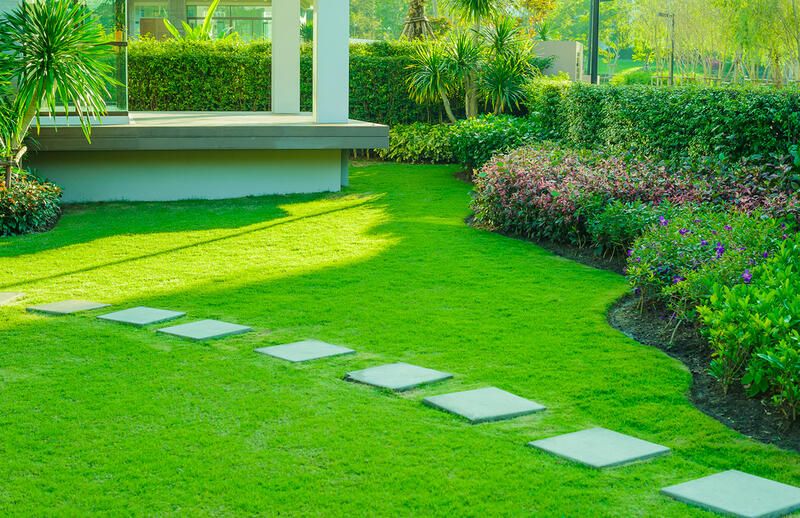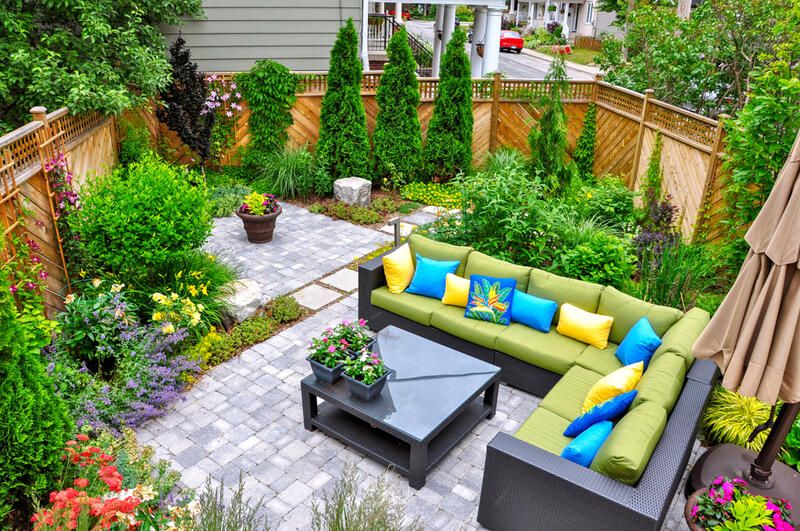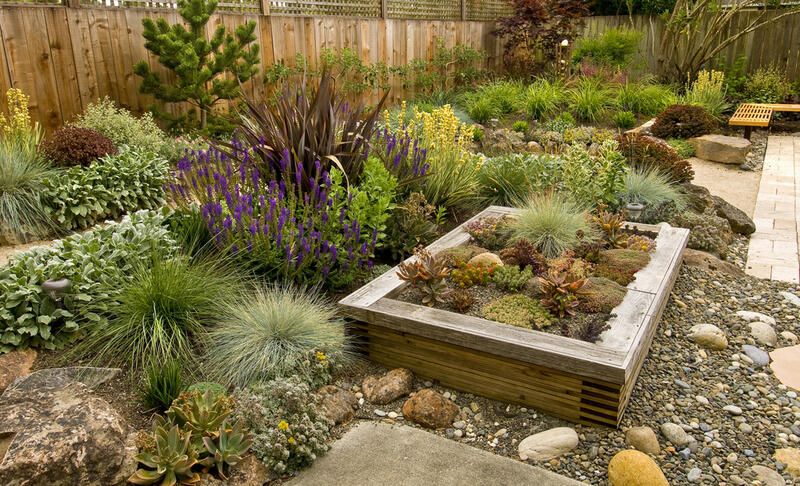
Landscape Design Styles: ShrubHub's Guide To The Most Popular Outdoor Styles
Published: 31/12/1969 | Updated: 13/11/2023
Secondary details can make big changes and help tie the greater whole together.


Ever noticed how a new haircut or a change of clothes can alter your overall look? This goes to show the power of choosing the right style.
And landscape design is no different!
When choosing a landscape design for your yard, it is very important to keep the style of your house in mind.
Other elements such as climate, soil conditions, planting zone, and maintenance preferences should also be considered for the best outcome.
This will help you create a head-turning design in which everything looks intentional and like it belongs where it is.
Let's go over some of the main design styles and elements that will help you choose the ideal approach for your home.

Main Design Elements
Any landscape design consists of two main elements: Hardscape and softscape.
Hardscape is all the nonliving elements in your design, such as structures, walkways, walls, furniture, and decorative elements.
Softscape represents living elements such as landscape plants, flowers, and garden features.
Creating a good balance of hardscape and softscape is essential to a successful design.
There are two main approaches you could take when creating a landscape style.
Choosing one will help narrow your options down and work your plan in the right direction.
Formal Landscaping style
The first approach is the formal one.
It is characterized by having certain patterns and being highly organized.
The formal approach finds a good aesthetic in order and visual symmetry and reflects that in the use of regular geometric shapes, straight lines, minimal color palettes, and refined textures.
This formal take on landscape design is often associated with modern and zen styles due to their non-naturistic character.

Informal Landscape Style
An informal style takes a more natural route as it aims to show less planning and to appear more relaxed and less structured.
This approach is generally more popular and requires less maintenance as it allows plants to grow freely and follows no specific patterns.
After choosing the approach you're looking to take, you can then mix and match the formality level with your suitable architectural style and garden design to create your dream yard.
Popular Landscaping Styles
The most common landscape styles are modern and traditional.
Almost all other design approaches fall under these two styles.
1. Modern
A modern style is highly linked to formality and efficiency.
It celebrates simplicity and minimalism and encourages a low-maintenance garden approach.
This feature formality may require keeping a yard manicured and creating more maintenance requirements.
A modern style typically implements the use of straight lines and sharp angular designs to create a formal shift from one area to another.
It also uses materials with a minimal finish like concrete, wood accents, and artificial turf.

2. Traditional
The traditional style adopts more of a freeform style with curves and irregular shapes and uses warm color tones.
It also relies on the use of softscape more than hardscape elements and incorporates a variety of shrubs and flowering plants.
A traditional style can be as formal or informal as you make it.
A formal traditional style will aim to provide a classic polished look with boxwood hedges and manicured plants that create symmetry and uniformity.
An informal traditional style will take a naturistic approach with a variety of colors and a sense of natural randomness.
3. Transitional
A transitional style uses a mix of traditional and modern design elements.
It can incorporate a mix of curves and straight lines or a contemporary hardscape with natural plants and colorful flowers.
Transitional designs also mix traditional materials like gravel and stone with materials used in contemporary designs like concrete or pavers.
If you have a traditional home that you're looking to modernize, a transitional approach will be ideal for your outdoor space!

4. Xeriscape
Xeriscaping is a contemporary design approach that encourages the use of drought-resistant and native plants for sustainable purposes.
This style uses permeable hardscape materials like gravel and mulch to prevent water loss and create low-maintenance spaces.
The level of formality can be adjusted with this design approach.
The neutral nature of xeriscaping makes it suitable for many different home designs.
5. Desert Landscaping
Desert landscaping is often confused with xeriscaping. And although the two are quite similar, they're two different styles with different aims.
A desert design aims to use plants that can survive an extreme climate.
It incorporates plant species that are adapted to surviving in dry and hot environments such as succulents, agaves, and cacti.
Like xeriscape, a desert style uses permeable hardscape materials such as gravel, and low water ground covers as a substitute for grass.

6. Mediterranean
Mediterranean style is another landscape approach that combines both modern and traditional elements.
It draws heavy inspiration from the coastal areas of countries like Italy and Greece as the name implies.
An herb garden and a tiered water fountain are signature features of this style. Olive and fruit trees are also more than likely to be found in a Mediterranean garden.
Hardscape in a Mediterranean design takes a more modern approach with straight lines and neutral colors.
7. Tropical
A tropical style is characterized by the use of lush, big-leaved plants.
It typically maintains a higher softscape-to-hardscape ratio and draws its essence from the use of palm trees and plants like elephants' ears, banana plants, and birds of paradise.
The hardscape in a tropical design can adopt either a modern or a traditional approach based on personal preference.

8. English Garden Style
English garden is one of the most popular amongst other traditional landscape design styles.
It gets its character from the use of textures such as shrubs and tall trees and various flowering plants and perennials.
English gardens often attain an effortless sense of elegance and formality and can easily fit any traditional home.
Trendy Landscape Design Ideas For Any Architectural Style
Landscaping styles like Tropical and Mediterranean rely on the use of certain plants and trees to achieve their distinctive looks.
Here are some more garden styles that can add life to your outdoor space.
Meadow Garden
A meadow garden is another contemporary garden approach that celebrates the wildness of nature.
They're made to reduce lawn footprints.
Meadow gardens use native plants and grasses in a free-form style.
Check out this article (link to meadow garden article here) to learn more about meadow gardens.

Woodland Garden
A woodland garden aims to landscape areas that are heavily shaded by using plants that are adapted to shade.
It is ideal for the back of properties with wooded areas.
Make Your Garden Your Home's Focal Point With Landscape Design
Make the most of your outdoor space by adding function features like a standalone pergola for a hangout space or a fire pit for an additional gathering and seating area.
Contemporary elements like vegetable gardens and edible plant gardens will help you develop a productive hobby and will add value to your outdoor space.
It's as important to create a yard you will love and find comfort in as it is to choose a well-suited design style.
Make sure to add personal elements to help your outdoor spaces feel like a part of your home.

Shrub Hub Helps You Bring Your Style to Life
Shrub Hub's talented design team helps you create a vision and find your style to personalize your space.
Our design team works directly with you to ensure a perfect understanding of your property's conditions and budget preferences to leave no room for mistakes or re-dos.
You deserve the finest quality at the best prices, don't miss out on our limited holiday promotional packages.
Go to Shrubhub.com for more information.


